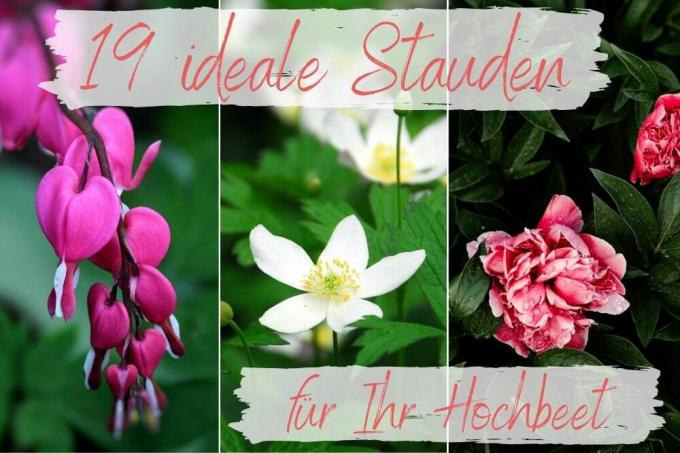
table of contents
- Ideal location
- Shady locations
- Partially shaded locations
- Sunny locations
Raised beds are very popular in the local gardens. If a raised bed with colorful plants is a decorative eye-catcher, the easy-care and perennial perennials are very suitable here. Because if properly laid out, they bloom from early spring to late autumn. Since the bed itself is already very high, the plants themselves should not grow too high. The following article shows a small selection of suitable perennials for planting a raised bed.
Ideal location
Since the perennials are put together in a relatively small bed, which for this reason is usually not a large one Subject to fluctuations in brightness, the following list was divided into shady, partially shaded and sunny locations divided. Because not every plant thrives equally well in every location. When planting the raised bed, care should be taken to ensure that the selected plants prefer the same location.
Shady locations
If the raised bed is in a shady location, for example on a north side in front of a house wall or a boundary wall, then no sun can reach it. Therefore, only plants that can cope with shade and do not want direct sunlight can be cultivated in such a bed:
Lady's Mantle (Alchemilla)
- Ground cover
- between 45 and 60 centimeters high
- deciduous foliage
- yellow-green flowers
- Flowering time from July to October
- after flowering small nuts
- tends to self-sow
- Regularly pluck out young plants
- hardy

Hostas (hosta)
- also known as heart petals
- Ornamental leaf
- Leaves cream white, steel blue, dark green or yellow green
- often patterned and multicolored
- Depending on the variety, the leaves turn golden in autumn
- spread through rhizomes
- white or purple bell flowers
- on long, bare stems
- Flowering period from August to September
- Avoid late frost

Tip: Leave the leaves of the hostas on the plant in winter, they will turn yellow and lie on the eyrie. They rot on their own and can then simply be removed in spring before the plant sprouts again.
Silver candle (new: Actaea, old: Cimicifuga)
- also known as St. Christopher's herb or women's root
- white, elongated flower candles
- upright flower stalks
- give off a sweet scent
- Foliage pinnate several times
- several leaf colors available
- dark red, light green or brown
- flowers up to two meters high
- Flowering time from June to autumn
- toxic in all parts, especially in the roots
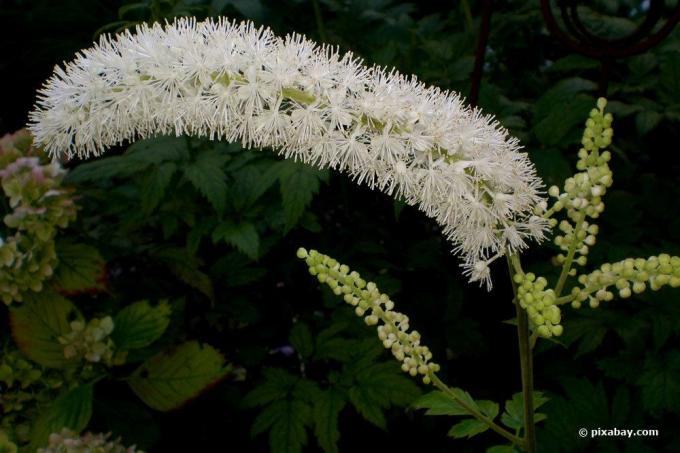
Tip: A perennial is characterized by the fact that it multiplies via the roots. It is also very easy to divide and multiply the decorative plants, because the roots simply have to be separated into several parts. In this way, you can plant additional beds, tubs or raised beds from your decorative perennials.
Bleeding heart (lamprocapnos spectabilis)
- also known as the Flaming Heart
- up to 80 centimeters high
- pink and white flowers
- heart-shaped grapes
- on overhanging curved shoots
- Flowering time from April to June
- poisonous
- hardy
- grows herbaceous
- lime tolerant
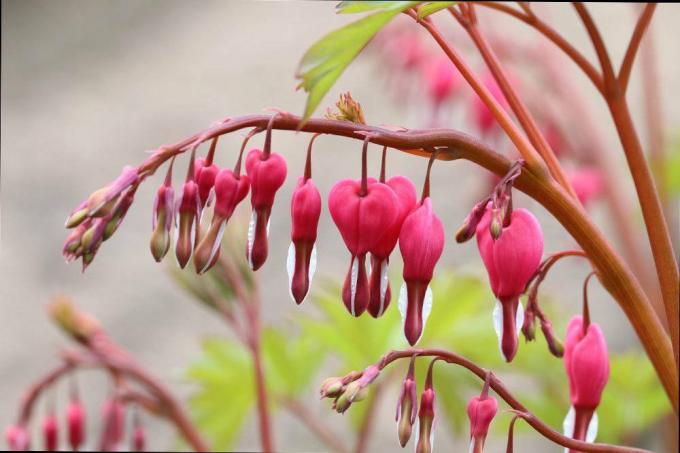
Note: The bleeding heart is unfortunately poisonous in all parts and was even chosen as poisonous plant of the year in 2017. Therefore, you should refrain from cultivation if you have small children or pets in the household.
Wax bell (kirengeshoma)
- Height up to one meter
- forms subterranean runners
- can therefore grow up to 80 centimeters in width
- yellow bell-shaped flowers
- Flowering period from August to September
- hardy
- non-toxic
- sensitive to lime

Tip: If you are planting a raised bed with different perennial plants, then don't just pay attention on the altitude and the choice of location, but also on a good mix of spring, summer and Late blooming. So you have a colorful variety in the bed all year round.
Partially shaded locations
A partially shaded location is one that receives a little sun depending on the position of the sun. It can also lie under a tree and the sun can only shine through moderately here. So the following perennials are suitable here:
Columbine (Aquilegia)
- red, yellow, blue, purple, white or pink flowers
- very popular with insects
- up to 90 centimeters high
- Flowering time from May to July
- second flowering in autumn after cutting
- Flowers on the central stem
- toxic in all parts
- hardy

Bergenia (Bergenia)
- was hardly noticed for a long time
- evergreen ornamental leaf
- large decorative leaves
- deep green or reddish in color
- beautiful autumn colors
- very hardy
- first flowers in January, depending on the climate
- Flowers in pink and red
- many small flowers on 50 centimeter long panicles
- second flowering possible in autumn
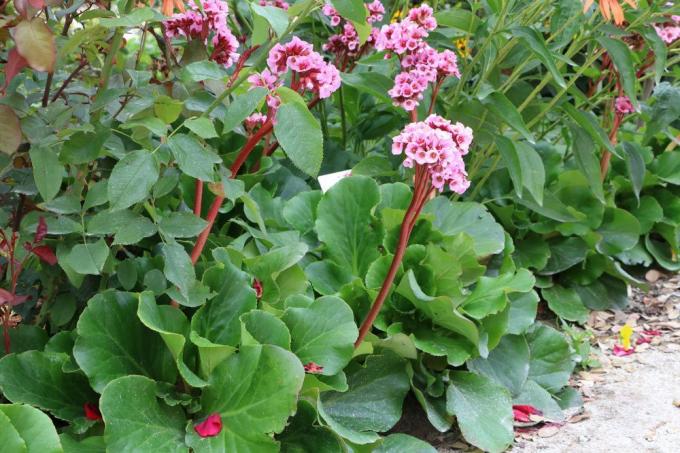
Tip: After being neglected for a long time and rarely cultivated in the local gardens, the decorative bergenia was voted Perennial of the Year 2017.
Autumn anemone (anemone)
- Flowering time from September to October
- delicate calyxes
- white, pink or pink
- very filigree
- from simple to filled
- pinnate foliage
- Height between 60 centimeters and 1.60 meters
- depending on the variety
- hardy
- tend to spread rapidly

Tip: In addition to the autumn anemones, there are also many varieties of anemones that bloom early or in summer. So you can also plant a raised bed with just anemones with the different flowering times and thus obtain abundant flowering from spring to autumn.
Light carnation (Lychnis)
- also known as Pechnelken
- rose-red and slit flowers
- on panicles
- upright growth
- wiry shoots
- up to 70 centimeters high
- Flowering time from May to July
- slightly poisonous
- forms rhizomes
- often self-sowing
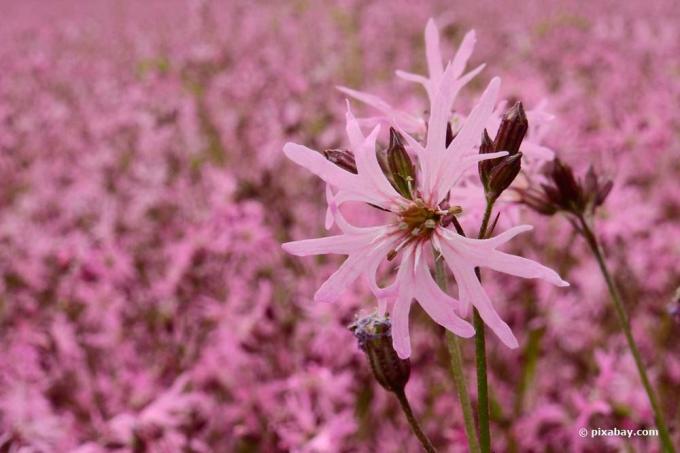
Lungwort (pulmonaria)
- very small perennial
- only about 30 inches high
- Flowering time from March to May
- in a mild climate already in February
- popular beehive
- purple, red, white or blue flowers
- independent flowers on winding grapes
- form a flower pile
- can change flower color during the flowering period
- hardy
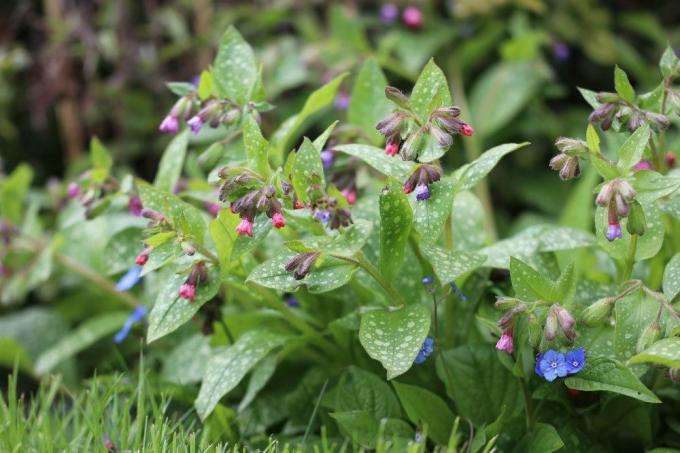
Note: The presentation of the actually very decorative perennials monkshood and thimble was deliberately omitted here, as it is both These are very poisonous plants, which you should really only plant in your raised bed if there is no danger to your own health consists. Cultivation should definitely be avoided with small children and pets in the household.
Sunny locations
For sunny locations, i.e. a raised bed that is exposed to full sun all day and does not receive a little shade from one or the other tree, there is the largest selection Plants.
Blue pillow (Aubrieta)
- forms a carpet of flowers
- up to 15 centimeters high
- Flower colors white, pink, red, blue and purple
- Flowering time from April to May
- cup-shaped flowers
- non-toxic
- hardy
- small, hairy leaves
- wants calcareous soil
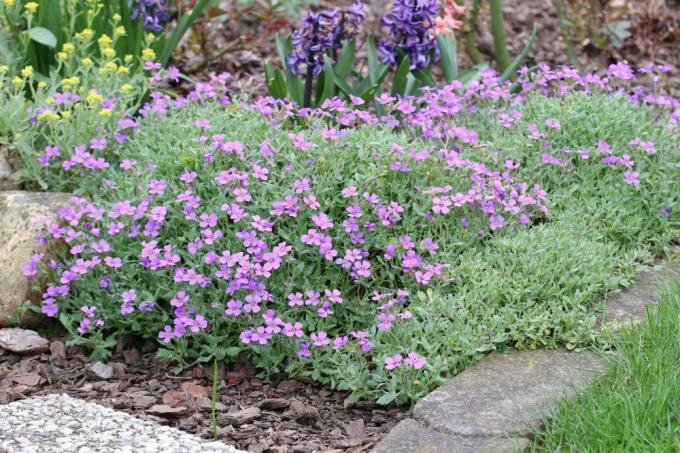
Flame flower (phlox)
- available in many different types
- crawling up to a meter high
- Flowers give off a pleasant scent
- annual and multi-year available
- grows very quickly
- more durable through division
- depending on the climate, flowering may fail
- The abundance of flowers changes from year to year
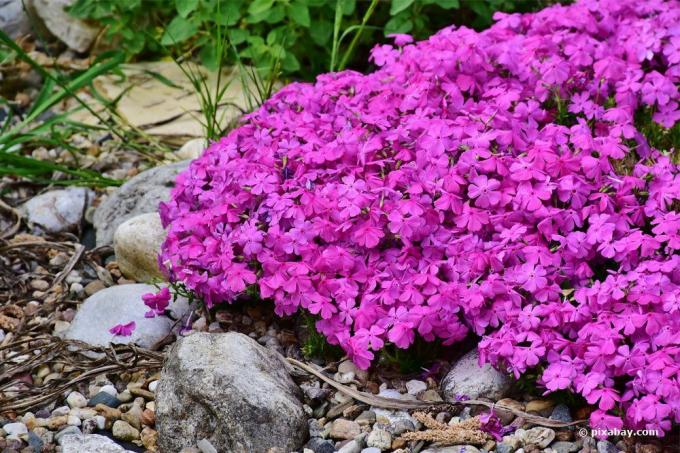
Tip: Since there are so many varieties of flame flowers, you can only plant a raised bed with phlox and still have a lush sea of flowers all year round. Because the different varieties also bloom at different times and in different colors.
Love grass (Eragrostis spectabilis)
- forms rhizomes
- up to 60 centimeters high
- sows itself
- grows overhanging and loose
- Flower colors red or purple
- Flowering period from August to October
- dense panicles
- forms nuts
- The leaves have autumn colors
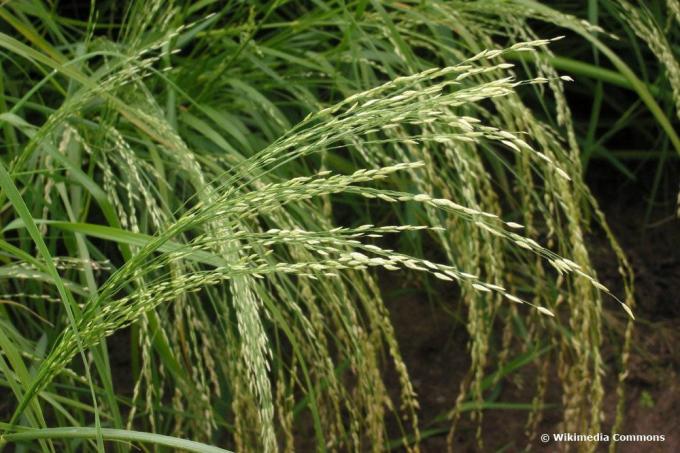
Note: The love grass is not a perennial, but, as the name suggests, a grass. Nevertheless, it is the perfect companion to the other plants in your raised bed.
Peony (peonies)
- clumpy-upright growing
- up to about 50 centimeters high
- Tuberous roots
- Flowering period from the end of April to May
- thick, opulent single flowers
- simple or filled
- dark red, light pink, yellow or white
- Roots hardy
- upper part dies in winter
- sprouts new in spring

Tip: When it comes to peonies, a distinction is made between perennials and shrubs. The perennial peonies are particularly suitable for planting your raised bed.
Yarrow (Achillea)
- natural beauty
- pretty tough
- small varieties up to ten centimeters
- high varieties up to 1.50 meters
- dense upholstery
- tend to proliferate
- many different flower colors
- Flowering period from June to September
- attract bees and other insects
- hardy

Sun-eye (heliopsis)
- can be up to 1.70 meters high
- yellow and orange flowers
- Flowering time from July to October
- longer in mild climates
- dense flower heads
- Single flowers
- hardy
- non-toxic
- chalk-loving

Sun bride (Helenium)
- Growth height up to 1.40 meters
- upright growth
- yellow flowers on corymbs
- Flowering time from July to September
- non-toxic
- lime tolerant
- hardy

Tip: As a rule, most of the perennials need to be cut back near the ground before winter and the first frost. A layer of mulch on the raised bed also helps prevent frost damage to the roots. The plants sprout again in spring.
Coneflower (Rudbeckia)
- impresses with its yellow ray flowers
- protruding horizontally
- other varieties slightly drooping
- Flowering time from July to October
- spreads through rhizomes
- between 40 centimeters and two meters high
- hardy
- perfect partner for grasses of all kinds

Tip: For planting your raised bed, however, you should opt for a low variety of sun hat. Higher-growing plants of other varieties and species can also be created around the raised bed.
Cranesbill (geranium)
- many different types
- often evergreen
- not all hardy
- many different flower colors
- white, red, pink, pink or multi-colored
- fast growing
- mostly upright
- also overhanging varieties
- Flowering time from May to October
- Always switch off what has faded
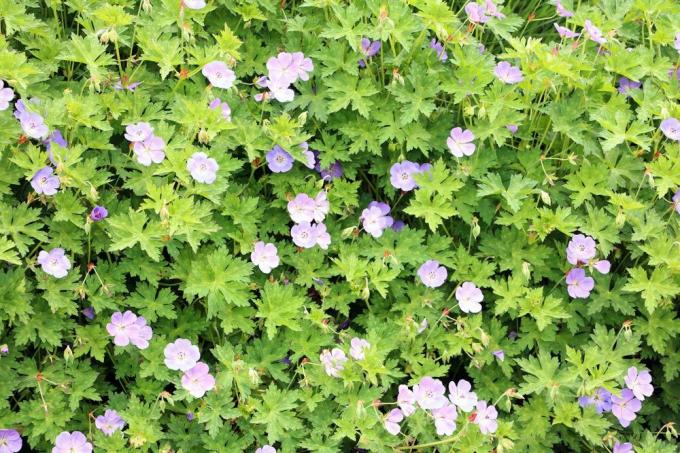
Note: Because of the smell of the cranesbill leaves, also known as geraniums, the plant is avoided by snails. If you put one or two of the decorative plants in the raised bed, the other plants are also protected from snails.
